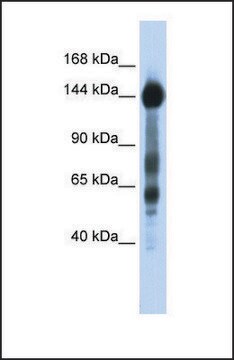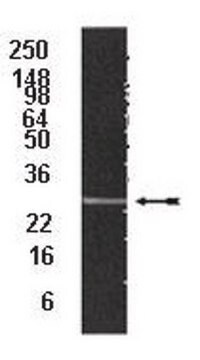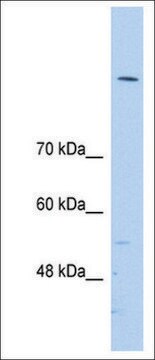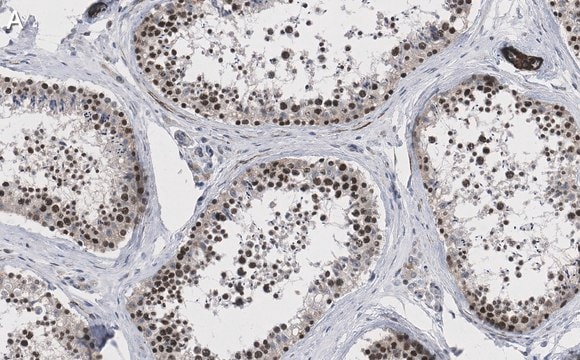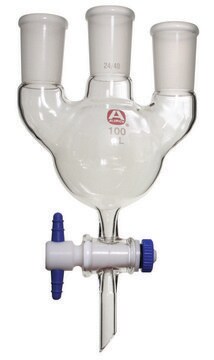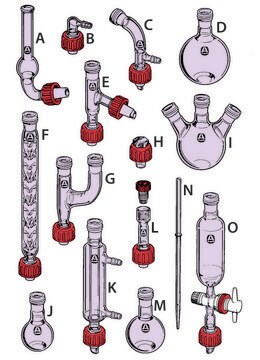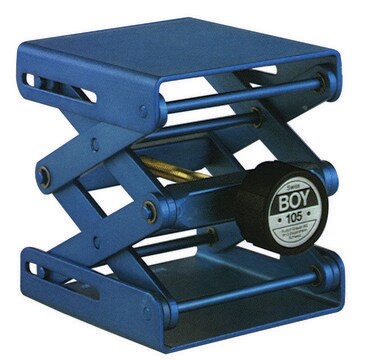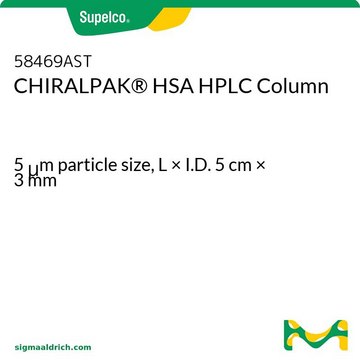General description
We are committed to bringing you greener alternative products, which adhere to one or more of the 12 Principles of Green Chemistry. This antibody is preservative-free, produced without the harm or sacrifice of animals and exceptionally stable to allow for ambient shipping and storage if needed, and thus aligns with "Waste Prevention", "Designing Safer Chemicals" and "Design for Energy Efficiency".
Click here for more information.
ZooMAb® antibodies represent an entirely new generation of recombinant monoclonal antibodies. Each ZooMAb® antibody is manufactured using our proprietary recombinant expression system, purified to homogeneity, and precisely dispensed to produce robust and highly reproducible lot-to-lot consistency. Only top-performing clones are released for use by researchers. Each antibody is validated for high specificity and affinity across multiple applications, including its most commonly used application. ZooMAb® antibodies are reliably available and ready to ship when you need them.
Specificity
Clone 2D21 is a ZooMAb® rabbit recombinant monoclonal antibody that specifically detects Sterol regulatory element-binding protein 1 (SREBF1). It targets an epitope within 23 amino acids from the N-terminal, cytoplasmic domain.
Immunogen
KLH-conjugate linear peptide corresponding to 23 amino acids from the N-terminal, cytoplasmic domain of human Sterol regulatory element-binding protein 1 (SREBF1).
Application
Quality Control Testing
Evaluated by Western Blotting in Human adrenal gland tissue lysate.
Western Blotting Analysis: A 1:1,000 dilution of this antibody detected SREBP1 in Human adrenal gland tissue lysate.
Tested Applications
Western Blotting Analysis: A 1:1,000 dilution from a representative lot detected SREBP1 in Human liver tissue lysate.
Immunocytochemistry Analysis: A 1:100 dilution from a representative lot detected SREBP1 in HepG2 cells.
Immunohistochemistry (Paraffin) Analysis: A 1:1,000 dilution from a representative lot detected SREBP1 in Human liver and Human adrenal gland tissue sections.
Affinity Binding Assay: A representative lot of this antibody bound SREBP1 peptide with a KD of 1.3 x 10-7 in an affinity binding assay.
Note: Actual optimal working dilutions must be determined by end user as specimens, and experimental conditions may vary with the end user.
Target description
Sterol regulatory element-binding protein 1 (UniProt: P36956; also known as SREBP-1, Class D basic helix-loop-helix protein 1, bHLHd1, Sterol regulatory element-binding transcription factor 1) is encoded by the SREBF1 (also known as BHLHD1, SREBP1) gene (Gene ID: 6720) in human. SREBP-1 is a multi-pass membrane protein found on nuclear, endoplasmic reticulum, and Golgi membranes. It attaches to membranes via two hydrophobic sequences (aa 477-497 and 536-556). It is expressed in a wide variety of tissues but is most abundant in liver and adrenal gland. SREBP-1 has two cytoplasmic domains (aa 1-487 and 569-1147), two transmembrane domains (aa 88-508 and 548-568), and one lumenal domain (aa 509-547). In the precursor form, which has a hairpin orientation in the membrane, both the N-terminal transcription factor domain and the C-terminal regulatory domain face the cytoplasm. Two separate site-specific proteolytic cleavages are required for release of the transcriptionally active N-terminal domain. These cleavages are carried out by two distinct proteases, called site-1 protease (S1P; aa 490-491) and site-2 protease (S2P; aa 530-531). It serves as a transcriptional activator that is essential for lipid homeostasis and regulates transcription of the LDL receptor gene. It is also involved in fatty acid and cholesterol synthesis. It acts by binds to the sterol regulatory element 1 (SRE-1) (5′-ATCACCCCAC-3′) and displays dual sequence specificity binding to both an E-box motif (5′-ATCACGTGA-3′) and to SRE-1 (5′-ATCACCCCAC-3′). SREBP-1 can be phosphorylated by AMPK at Ser402, which suppress its processing and nuclear translocation, and thereby repress target gene expression. Six isoforms of SREBP-1 have been described that are produced by alternative splicing. Isoform SREBP-1C predominates in liver, adrenal gland, and ovary, whereas isoform SREBP-1A predominates in hepatoma cell lines. Both isoforms are found in kidney, brain, white fat, and muscle. This ZooMAb® recombinant monoclonal antibody, generated by our propriety technology, offers significantly enhanced specificity, affinity, reproducibility, and stability over conventional monoclonals. (Ref.: Amemiya-Kudo, M., et al. (2002). J. Lipid Res. 43(8); 1220-1235; Yokoyama, C., et al. (1993). Cell. 75(1); 187-197).
Physical form
Purified recombinant rabbit monoclonal antibody IgG, lyophilized in PBS with 5% Trehalose, normal appearance a coarse or translucent resin. The PBS/trehalose components in the ZooMAb formulation can have the appearance of a semi-solid (bead like gel) after lyophilization. This is a normal phenomenon. Please follow the recommended reconstitution procedure in the data sheet to dissolve the semi-solid, bead-like, gel-appearing material. The resulting antibody solution is completely stable and functional as proven by full functional testing. Contains no biocide or preservatives, such as azide, or any animal by-products. Larger pack sizes provided as multiples of 25 µL.
Reconstitution
300 µg/mL after reconstitution at 25 µL per vial. Please refer to guidance on suggested starting dilutions and/or titers per application and sample type.
Storage and Stability
Recommend storage of lyophilized product at 2-8°C; Before reconstitution, micro-centrifuge vials briefly to spin down material to bottom of the vial; Reconstitute each vial by adding 25 µL of filtered lab grade water or PBS; Reconstituted antibodies can be stored at 2-8°C, or -20°C for long term storage. Avoid repeated freeze-thaws.
Legal Information
ZooMAb is a registered trademark of Merck KGaA, Darmstadt, Germany
Disclaimer
Unless otherwise stated in our catalog or other company documentation accompanying the product(s), our products are intended for research use only and are not to be used for any other purpose, which includes but is not limited to, unauthorized commercial uses, in vitro diagnostic uses, ex vivo or in vivo therapeutic uses or any type of consumption or application to humans or animals.



